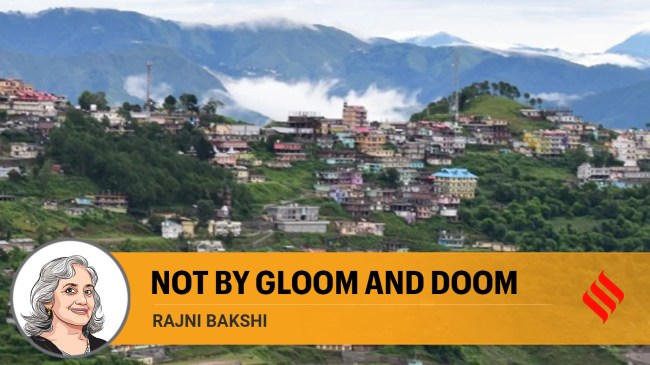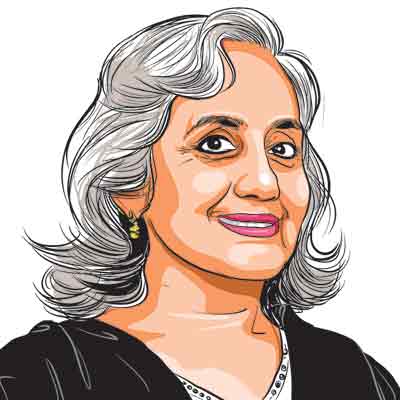Opinion To combat the climate crisis, alarmism is not the way to go
There are those who will argue that raising general public awareness about and demand for ecologically sound policies is a difficult or impossible task. But what does such determinism gain us?
 Can we craft narratives that address a paradox — encourage people to face the grim prognosis and yet do this in ways that expand rather than shut down their sense of agency?
Can we craft narratives that address a paradox — encourage people to face the grim prognosis and yet do this in ways that expand rather than shut down their sense of agency? In the last 30 years, Himachal Pradesh has lost 50 per cent of its glacier area. When the state’s chief secretary said this at Himachal’s administrative academy, earlier this year, there were no gasps of shock among the audience. The outsiders in the conference hall were mostly experts who knew these trends in detail. The local people seem inured to this reality. They suffer every year as raging torrents of melted glacial waters devastate lands, roads, and homes.
And yet, the gathering was dedicated to “Samridh Himachal 2045”. How can the hill people even dream of a prosperous future when all the data indicate that they are now facing an indefinite period of cascading disasters? Or could it be that climate chaos might actually lead to a redefinition of “development” and “value”?
A meaningful answer to the first question is not that “hope springs eternal”. Hope alone can become delusional. A futuristic “samridh” narrative is worthwhile only if it combines defiant determination with wisdom.
It is easy to identify the greed of both private companies and political masters as enemy number one of the Himalayan ecosystems. This is largely why new dams and other disruptive projects continue to be planned and built even after several predecessors have been swept away by ferocious torrents. However, there are more insidious dangers. One is the assumption that if we make people more aware of the environmental data, this will somehow lead to solutions. On the contrary, there is evidence that when faced with overwhelming projections about the future, people feel so numbed that it slows or shuts down their creative energies. During the Samridh Himachal colloquium, in private conversations, several bureaucrats said that many who are already suffering — due to the combined consequences of climate chaos and poor planning — are adopting a fatalistic view.
The other, even more insidious, danger is habit. In a breakaway session of the colloquium, a young official spoke proudly about how Himachal is marching ahead in building dams to maximise its hydropower potential. His education and orientation have deeply embedded the notion that dams equal prosperity. When I asked, “Where will the water come from? Fifty per cent of glaciers are already gone,” he seemed both perturbed and puzzled.
It may not help to tell that young man that dams are not temples of modern India, as he has been taught, but have now become tombs. Breaking most or all existing habits of thought may be the biggest challenge going forward. But only then is fresh thinking and truly open reasoning possible. However, the challenges ahead are even more deeply connected to aspirations. Today, prosperity and development are also equated with millions of people being able to drive easily to what were earlier remote pilgrimage sites. So we have multi-lane roads and other facilities, which are at odds with the fragility of the Himalaya.
So what, in this context, could defiant enthusiasm mean? It is clear that “samridh” cannot be equated with either status quo or harking back to a past in which humans and nature lived in a better balance. Perhaps the foremost challenge is for those of us who have advocated a more eco-sensitive notion of development and value for over half a century. Can we rapidly craft narratives that address a peculiar paradox — encourage people to face the grim prognosis and yet do this in ways that expand rather than shut down their sense of agency?
A wide variety of civic organisations are already engaged in localised solutions — both for eco-restoration and survival in times of natural disasters. So far, these are largely efforts on the margins. It is not necessary that these groups themselves scale to a regional level. Their function might often be more demonstrative than comprehensive problem-solving.
While the onus of more comprehensive solutions is eventually on governments and political parties, appropriate action from them requires demands and pressure from the samaj at large. Here is the most tricky challenge: Will people demand larger highways in the mountains or will they instead demand more sustainable policies and projects?
There are those who will argue that raising general public awareness about and demand for ecologically sound policies is a difficult or impossible task. But what does such determinism gain us? The opposite of this is not optimism. Instead, it is the ability to keep stretching our imagination and creativity, both to be better prepared to survive climate disasters and yet not succumb to anxiety and fear.
The writer is the founder of the Youtube channel Ahimsa Conversations





